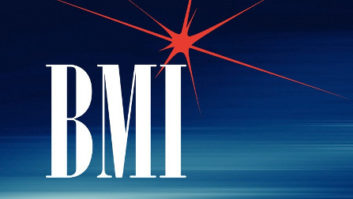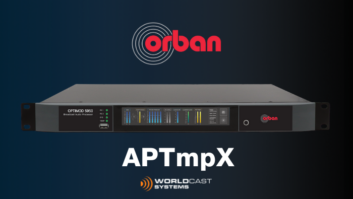The author is a former programmer at WAPN(FM).
I keep reading in numerous articles that AM receiver audio bandwidth is limited to 4 kHz or so.
This is not correct, and has not been correct for many years. That 4 kHz number comes from the old “all Japanese six (transistor)” reference design, which as far as I can tell has not been produced by any manufacturer in over 30 years. I have done an extensive analysis of what is actually produced today in home and portable radios, and posted it at http://earmark.net/gesr/Current_Radio_Design.htm.
If you are using one cheap ceramic filter as the AM IF element, a completely unintended side effect is that the radio is inherently broadband. I have seen some ugly filters out there with responses as wide as ±30 kHz, even wider. It is usually in very cheap radios with small ferrite bars intended for local station reception only. If the audio bandwidth is limited at all — it is limited by a simple one pole RC low-pass filter, which is easily defeated by removing the capacitor. I think these sloppy AM IF bandwidths are also used so that bad mechanical tuning mechanisms can still land you somewhere in the IF bandwidth and you can hear the station. That — or in digitally tuned models it allows a cheap DAC to generate imprecise voltages to the varactors and you can again land on local stations. Put a better quality IF ceramic filter in these cheap radios — it does narrow the bandwidth and increase the selectivity, but it also makes the analog tuned radios hard to tune, and the digitally tuned radios miss some of the frequencies.
[Read: AM Preemphasis — Time for a New Curve?]
Car radios fare a little better — AM is being ported over to DSP code which can allow decent performance, but at the cost of dynamic range. It is very easy to get in situations with fluctuating signal levels where the AM audio is clipped. Older car radios used multiple ceramic filters on AM and had very good performance. I own a newer car radio with DSP AM — sensitivity and selectivity is very good — but clipping is an issue. I have had the opportunity to rent a number of cars in recent years, and AM performance varies widely. In some cars AM barely receives even local stations. It is definitely an afterthought and I would not be a bit surprised to see the band omitted completely.
HD AM is sometimes touted as the savior of AM, but for news talk and sports high-quality audio is not needed, neither is stereo. Stereo is only used during commercials and musical beds. The big elephant in the room is the low bitrates involved. We were promised AM music quality approaching FM. HD has failed to deliver, as high-frequency musical content can be aliased and down shifted to create surreal effects. YouTube is full of examples of HD AM musical quality compared to C-QUAM, with C-QUAM the clear winner. I am not a C-QUAM fanatic holding onto a failed standard, but it should be pointed out that it was a high-quality musical standard that worked for hundreds of miles at night — as opposed to HD AM that is nearly impossible to decode anywhere but in a narrow radius around the towers, usually much smaller than the market involved, and unfortunately it loses lock if there are power lines beside the road, which is probably 99% of roads and highways.
That is — if there is any market left for AM music other than small ethnic and foreign language niches. Far from being the savior of AM, HD appears to be receivable only by hard core DXers who know how to make it actually work — myself included. Not that the one remaining HD AM station in the area has a format that I have any interest in hearing. At 80 miles away, it has a weak but listenable analog signal, it is indeed remarkable to hear it decode into perfect digital speech, but it only does it if I am more than a quarter- mile from any power line. And in my wife and daughter’s new cars, which have shark fin antennas instead of a whip, there is no HD decode although it tries. The switch to shark fin antennas on cars could not have happened at a worse time for HD AM.
In summary, the best thing that could happen to AM, in my opinion, is for broadcasters to go to wideband mono, concentrate on the core elements that make AM desirable — talk, sports, news, and niche audiences. And vigorously lobby the FCC for stricter interference standards on their band. Otherwise, migration to low-power FM may be the only viable business model because receiver design is unlikely to improve for home and portable use, and cars will increasingly delete the band altogether.
Radio World invites industry-oriented commentaries and responses. Send to Radio World.
[Want more information like this? Subscribe to our newsletter and get it delivered right to your inbox.]












